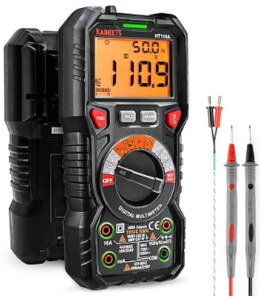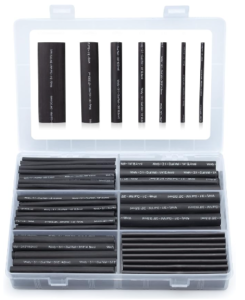This post contains affiliate links.
Understanding the Basics of Electric Scooter Repairs
Before diving into repairs, you need a basic understanding of how your scooter works. Electric scooters typically consist of the following components:
- Battery: Powers the scooter.
- Motor: Drives the wheels.
- Controller: Manages power distribution.
- Throttle: Controls speed.
- Brakes: Ensure safe stopping.
- Tires: Provide grip and support.
Familiarizing yourself with these parts will help you diagnose and fix issues efficiently.
1. Diagnose the Problem
The first step in repairing your electric scooter is identifying the issue. Whether it’s a battery that won’t charge or a wheel that won’t spin, diagnosing the problem accurately is critical.
How to Diagnose:
-
- Check for error codes or alerts on your scooter’s display.
- Test each component individually, starting with the battery and moving to the motor, throttle, and brakes.
Recommended Product:
KAIWEETS Digital Multimeter
This tool helps you test your battery, motor, and wiring for electrical issues. It’s highly rated for its accuracy and ease of use.
2. Repairing Battery Issues
One of the most common problems with electric scooters is battery failure. If your scooter won’t start or loses charge quickly, the battery is often the culprit.
How to Fix Battery Issues:
- Check the Charger: Use a multimeter to ensure your charger is delivering power.
- Clean Battery Terminals: Corrosion can interfere with power flow. Clean the terminals with a dry cloth or a battery cleaner.
- Replace the Battery: If the battery no longer holds a charge, replace it with a compatible one.
Recommended Product:
Segway Ninebot Replacement Battery
This reliable lithium-ion battery is compatible with many electric scooter models and is a favorite for its long-lasting performance.
3. Troubleshooting Motor Problems
If your scooter’s motor isn’t functioning properly, it could be due to wiring issues, a damaged controller, or internal motor faults.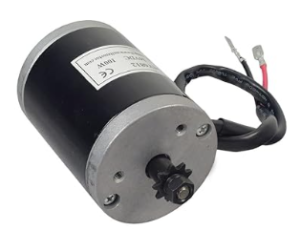
How to Fix Motor Issues:
- Inspect the motor wiring for loose or damaged connections.
- Test the controller to ensure it’s sending power to the motor.
- If the motor is making unusual noises or doesn’t turn, consider replacing it.
Recommended Product:
AlveyTech Electric Scooter Motor Replacement
This motor replacement is compatible with various scooter models and has excellent reviews for durability and performance.
4. Fixing Throttle Issues
A faulty throttle can result in erratic speed control or no response at all. If you notice jerky acceleration or the scooter is not responding to throttle input, it’s time to inspect it.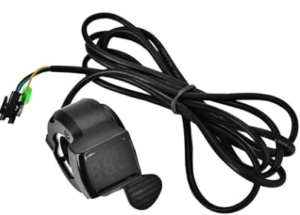
How to Fix Throttle Issues:
- Check the throttle wiring for loose connections.
- Test the throttle’s functionality with a multimeter.
- Replace the throttle if it’s damaged or malfunctioning.
Recommended Product:
TOPINCN Thumb Throttle for Electric Scooters
This replacement throttle is easy to install and fits most scooter models, making it a popular choice among DIY enthusiasts.
5. Repairing or Replacing Tires
Flat tires or worn-out treads are common issues that affect your scooter’s performance and safety. Whether your scooter has pneumatic or solid tires, regular inspection is necessary.
How to Fix Tire Issues:
- For Pneumatic Tires: Patch or replace the inner tube if punctured.
- For Solid Tires: Replace the tire if it’s damaged or worn.
- Ensure proper alignment and secure the tire tightly.
Recommended Product:
Cooryda Electric Scooter Inner Tube and Tire Replacement Kit
This kit includes high-quality inner tubes and tires compatible with many electric scooters. It’s a top-rated choice for durability and ease of installation.
6. Adjusting and Repairing Brakes
Faulty brakes can jeopardize your safety. Whether your scooter has disc brakes, drum brakes, or electronic brakes, keeping them in good condition is crucial.
How to Fix Brake Issues:
- Tighten loose brake cables using an Allen wrench.
- Clean disc brakes with a brake cleaner to remove dirt and grease.
- Replace worn-out brake pads or discs.
Recommended Product:
Muc-Off Disc Brake Cleaner Spray
This cleaner effectively removes dirt and oil from brake components, ensuring optimal braking performance.
7. Fixing Suspension Problems
If your rides feel bumpier than usual, the suspension system might be the problem. Loose or worn-out suspension components can affect comfort and handling.
How to Fix Suspension Issues: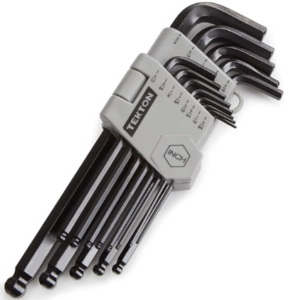
- Tighten any loose suspension bolts.
- Replace worn-out springs or dampers.
- Check for alignment issues and adjust as needed.
Recommended Product:
Allen Wrench Set by TEKTON
This high-quality toolset includes all the sizes you’ll need to adjust suspension bolts and other scooter components.
8. Dealing with Electrical Wiring Issues
Electrical wiring issues can cause a variety of problems, from a scooter that won’t start to intermittent power loss. Inspecting and repairing wiring is a vital skill for DIY repairs.
How to Fix Wiring Issues:
- Look for visible damage, such as frayed wires or loose connections.
- Use electrical tape or heat-shrink tubing to secure damaged wires.
- Replace wiring if necessary.
Recommended Product:
Wirefy Heat Shrink Tubing Kit
This kit includes various sizes of heat shrink tubing to repair and protect electrical wiring.
9. Replacing the Controller
The controller manages power distribution between the battery and motor. If your scooter isn’t responding to inputs or is experiencing erratic behavior, the controller might need attention.
How to Replace the Controller:
- Disconnect the battery and remove the controller.
- Note the wiring connections for proper reinstallation.
- Install the new controller and reconnect the wires.
Recommended Product:
Scooter Controller Replacement by labwork
This highly-rated controller is compatible with many scooter models and is easy to install.
10. General Maintenance Tips
Preventive maintenance can help you avoid costly repairs in the long run. Regular care keeps your scooter running smoothly and extends its lifespan.
General Maintenance Checklist: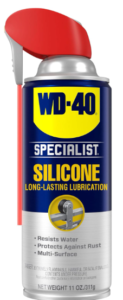
- Clean Your Scooter: Wipe down your scooter regularly to remove dirt and debris.
- Lubricate Moving Parts: Use a silicone-based lubricant on hinges and joints.
- Inspect Components: Regularly check the tires, brakes, and battery for signs of wear.
Recommended Product:
WD-40 Specialist Silicone Lubricant
This lubricant works well on electric scooter hinges and moving parts, reducing friction and preventing rust.
11. Safety First
Before starting any DIY repairs, prioritize your safety. Working with electrical components and heavy machinery requires proper precautions.
Safety Tips:
- Wear insulated gloves when handling electrical parts.
- Disconnect the battery before starting repairs.
- Work in a well-lit and ventilated area.
Recommended Product:
Ironclad General Utility Work Gloves
These gloves offer excellent grip and protection, making them ideal for scooter repairs.
12. When to Seek Professional Help
While DIY repairs can save you money, some issues might be too complex or risky to handle on your own. If you’re unsure about a repair or if the scooter has significant internal damage, consult a professional technician.
Conclusion
Repairing your electric scooter at home doesn’t have to be intimidating. With the right tools, products, and knowledge, you can handle most common issues and keep your scooter running smoothly. By following these DIY electric scooter repair tips, you’ll save money, improve your technical skills, and gain the satisfaction of maintaining your scooter yourself. So gear up, get the tools you need, and start tackling those repairs today!
